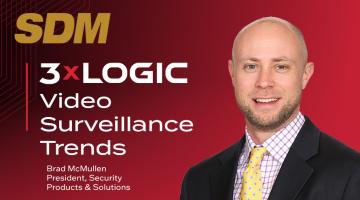Network Health Monitoring Works for You
When You Can’t Be There!
Erron Spalsbury, Global Sales Support Manager, 3xLOGIC VCM, better known as Vigil Central Management, is about the best thing you can do for your CCTV system. Even the most reliable systems suffer outages resulting from hardware failures, environmental conditions, or malicious activity. No matter the cause, if the system isn’t up and running 100%, you are missing out on critical information.
Your Worst-case Scenario?
The worst-case scenario is when a customer has bought a system for their business and well after the initial installation, they call upon it after an incident, only to find out that it hasn’t been fully operational for quite some time. This is a tough phone call for a Support Technician to field, but there is a way to keep this from happening. It’s a much better call when the supporting dealer can proactively call the customer and say, “The front door camera is down, but don’t worry my technician is on the way to fix it.” With text or email system alerts, VCM provides the real-time visibility and alarms needed to ensure that the security tasks you bought the system for are really being provided. Measuring and tracking network performance and up-time is an important feature, but not the only one VCM provides.
System Updates and Changes Automatically
Not only can we ensure uptime of a system, we can also do fleet management for both users and software updates. Consider this example: your largest customer, a retail chain of hundreds of stores, is concerned with loss prevention solutions, and wants to have the latest software release from the manufacturer on all of their recorders. Rather than logging into each recorder with software like Remote Desktop or, even worse, sending a technician onsite with a thumb drive to update the software, VCM simply schedules the updates remotely. By uploading the new software into VCM you control when to perform these updates, typically during off hours of the business, as well as how many locations to be updated at a time, and the updates are remotely pushed to the recorders on schedule.
Using that same example with VCM, adding or removing an employee from all of the customer’s deployed systems is a simple remote task, but it can be a very laborious process if you are doing it the “old” way. Within VCM we just add the new employee and assign him/her to the group of recorders for which we want to grant access. Same process if we need to remove them. We delete that user, and they are instantly removed from however many locations they had access to—it’s just that easy!
Protect Your Investment!
Let me give you one more scenario and some final thoughts. You’re deploying video to a chain of stores, and you have a bunch of folks that will need access to each location. Rather than coaching each and every person on how to add a new site into the Client software, we just tie Client and VCM together. That way as a new site comes online and the installation is completed, it shows up in the client software automatically for as many users as we want. This is another massive time saver, not to mention the enormous potential the integrator has for RMR. (Reoccurring Monthly Revenue). During these challenging times, VCM provides real peace of mind to the end user, while offering additional services that have measurable benefits for both the installing dealer and the end user. Managing the system and performing system checks without ever having to physically enter the location keeps you, your personnel, and your customer safe through zero contact support because it’s all done remotely. I’ve highlighted only some of the major features of VCM here, there’s quite a bit more the software offers including remote registration, pulling and applying settings remotely, time syncing, and on it goes. If your surveillance system does not have VCM-like capabilities, you are not protecting your investment and there will come a day when you needed the system to be working 100%, and you’ll be out of luck—don’t let that happen.



